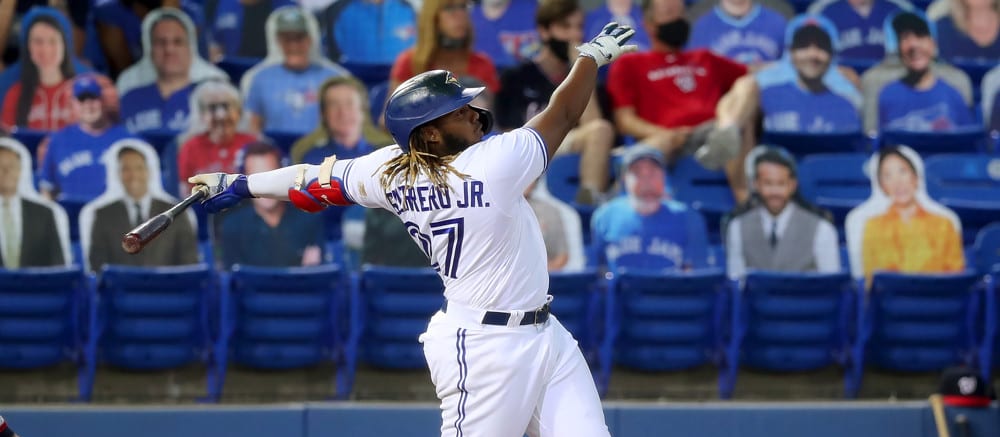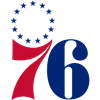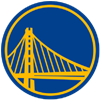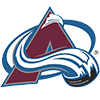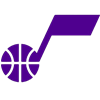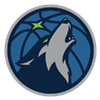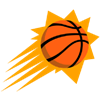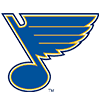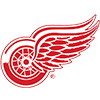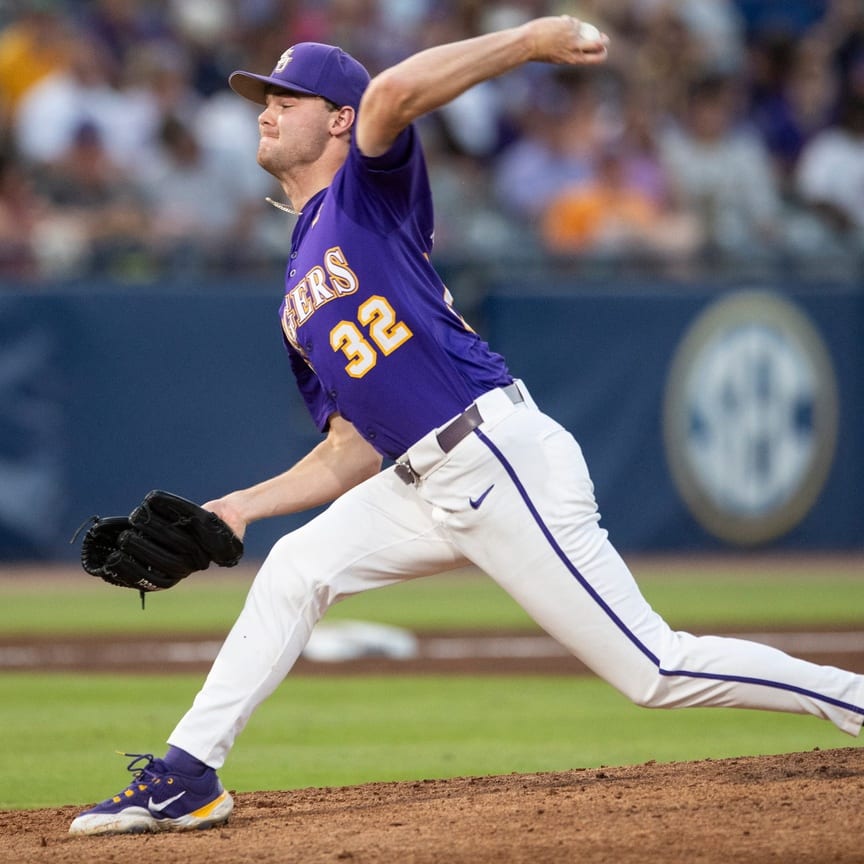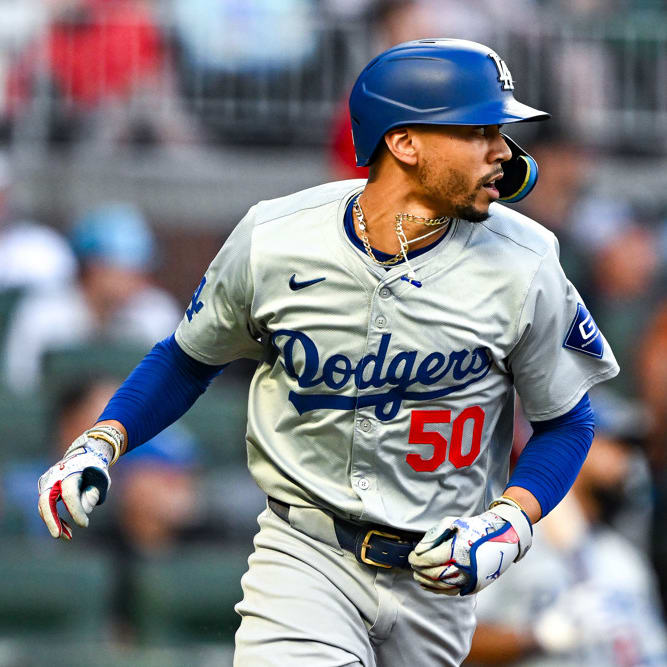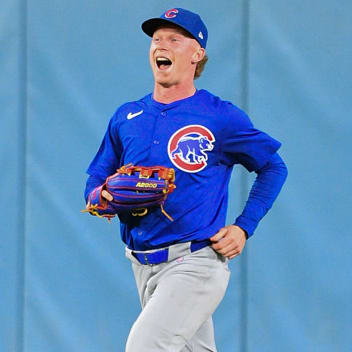I've always dreamt about participating in the National Fantasy Baseball Championship (NFBC) Main Event. With a record $175,000 grand prize for the 2022 overall contest winner, and individual league prizes awarded to the top-three finishers (out of 15 teams), including $7,000 for first place, I've often thought about the elite level of competition and season long grind it takes to win a league like this.
It's the ultimate fantasy baseball challenge.
Unfortunately, I've never been able to afford the cost to participate. The $1,750 entry fee is a lot of money and even splitting a team with a partner, which many Main Event contestants do, is a whopping $875. Being honest with myself, I don't have a long track record of success in 15-team NFBC leagues and diving into the Main Event would first mean several things:
I'd have to qualify — Fortunately, the NFBC offers a few ways to qualify for the Main Event without directly paying the $1,750. First, they offer a $125 entry, 15-team, winner-take-all league with entry into next year's Main Event at stake. I joined one of these for the first time last year and finished fifth in the league to fall short of qualifying for 2022.
Another way to qualify for the Main Event that NFBC periodically offers is through a Fanball daily fantasy sports (DFS) contest. These 50-team, three-max entry, one-night events are $50 to enter with a top prize of a Main Event seat. Funny enough, I have 2021 Main Event overall champion Phil Dussault to thank for introducing me to these qualifiers last spring. Upon seeing his post, I entered the April 16 Fanball contest on a whim and quickly familiarized myself with the interface and player pricing. As luck would have it, I ended up qualifying for the 2022 Main Event in my very first attempt! My winning lineup is below:
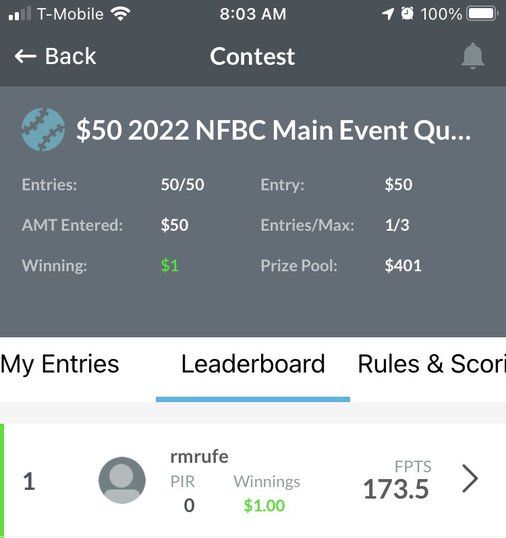
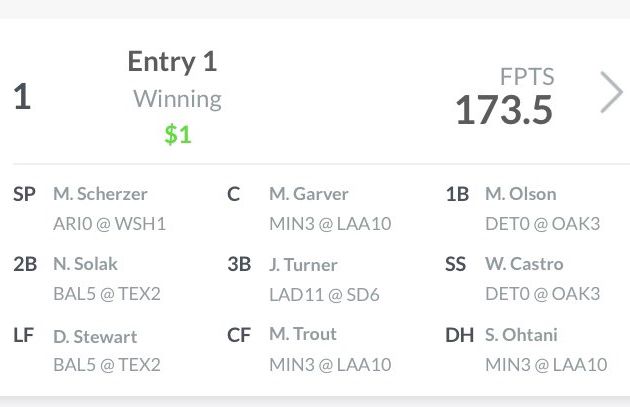
Upon the realization that this was real, I immediately knew I'd need to go "all in" on fantasy baseball for 2022. That means I'd have to:
Buy a bigger fantasy baseball toolbox — In addition to all the wonderful MLB tools and features we offer at RotoWire, I listen to several fantasy baseball podcasts. A few of my favorites are the Sunday night RotoWire podcast with Jeff Erickson and Scott Jenstad, the Pull Hitter podcast hosted by Rob DiPietro, and Bubba and The BatFlip with Brian Entrekin and Toby Guevin. These podcasts have been staples for me for a while, but I also made time for other podcasts I hadn't listened to prior to 2022. I won't list them all here, but there are almost too many fantasy baseball analysts putting out incredible content right now. Whether in the car, on the treadmill, or at work, I try to stay up to date on podcasts and will oftentimes go back and listen to a particular episode again if the topic(s) covered are worth noting for the future. I've been taking notes during podcasts for a few years now and still go back and review them often. As a tip, it helps if you copy and paste the corresponding link to the episode and document the minute mark in case you ever want to go back and listen again.
I highly recommend colleague Jeff Zimmerman and Tanner Bell's annual publication The Process. This book was new to my toolbox this year and I couldn't believe how much information was presented. From player valuations and rankings, to draft strategies and in-season management tips, Jeff and Tanner opened my eyes to so many things I hadn't considered before when playing fantasy baseball. Among the topics covered is standings gain points (SGP) as a means of calculating player valuations. SGPs are not for everyone and took a while for me to understand, but Tanner has some excellent SGP tools that are well worth your investment.
These are just a few of the many tools I invested in for the 2022 fantasy baseball season. In fact, I may have over-invested and prohibited myself from giving each tool the time and attention it deserves. Be careful not to make this mistake if expanding your own toolbox.
Invest the time — During the long grind of the 26 week baseball season, it's easy to fall into a routine of blindly setting your fantasy baseball lineups. For NFBC lineups, it's usually Monday morning when a busy new work week is starting, or Friday evening when weekend plans are kicking off. Sometimes life just gets in the way and we're not able to dedicate the time that is necessary to be successful in the highest stake competitions. This season, I will be carving out time in my schedule, even making the commitment to wake up an hour earlier each day, so I can manage my teams more effectively.
One key to this is much closer and more frequent categorical tracking. I built a custom Excel template that I will be using for each of my teams to ensure I'm tracking towards my category targets, both within my league and the overall standings. Doing this may better inform my add/drop and lineup decisions, as well as free-agent planning and prioritization.
My goal is to win - both my league and the overall contest. I'll have to beat 704 teams to accomplish the latter, most of whom are the smartest fantasy baseball minds in the world. I know I'm not as smart or as talented at this game as most are, but I'm willing to work hard to try and hang with the best of the best. Here's hoping I also have a bit of luck on my side throughout the 2022 season.
Hold myself accountable — Chronicling my entire journey through the NFBC Main Event is a big commitment, but one that I feel will help me become a better player. What would be even more rewarding to me is if this series of articles helps others too. I'll be posting a new article at each quarter point of the season, documenting how each week went within that quarter, along with my most important decisions, from starts and sits to FAAB additions and drops. You'll receive full transparency from me, with all my flaws, however embarrassing they may be, on display. Hopefully I'll have some success stories to share with you as well!
With that said, let's get to the reason you likely clicked this article to begin with — the draft results.
Fever Dream
On Sunday afternoon, April 3, I participated in my first ever NFBC Main Event draft. My 15-team league was full of familiar names like Chris Liss, Vlad Sedler, Zack Waxman and Larry Schechter, to name a few. I drew the eighth pick, which was my preferred Kentucky Derby Style (KDS) draft spot.
1.8 -  Vladimir Guerrero, 1B, Blue Jays - With starting pitching typically at a premium in the Main Event, I thought there was a good chance one of the top hitters would fall to this spot. Keep in mind this line of thinking was before Jacob deGrom's injury news broke, while he was still going in the first round of early Main Event drafts from Las Vegas. Fortunately, I still landed my primary target in Guerrero, despite his Main Event ADP climbing to 5.71 in the April 1-2 drafts. With so much emphasis on his lack of stolen bases, there's a small part of me that wants to prove that you can still build a successful team around him.
Vladimir Guerrero, 1B, Blue Jays - With starting pitching typically at a premium in the Main Event, I thought there was a good chance one of the top hitters would fall to this spot. Keep in mind this line of thinking was before Jacob deGrom's injury news broke, while he was still going in the first round of early Main Event drafts from Las Vegas. Fortunately, I still landed my primary target in Guerrero, despite his Main Event ADP climbing to 5.71 in the April 1-2 drafts. With so much emphasis on his lack of stolen bases, there's a small part of me that wants to prove that you can still build a successful team around him.
Other considerations: Brandon Woodruff, Shohei Ohtani
2.23 - 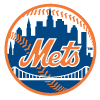 Starling Marte, OF, Mets - By taking Guerrero in round 1, I forced myself into drafting stolen bases with one of my next two picks. Marte, Whit Merrifield and Tim Anderson were my primary speed targets in this range and I wasn't sure if one would last to my next pick in round 3. After missing a good chunk of spring training with an oblique or rib injury, Marte made his Grapefruit League debut a few days prior to the draft, which increased my comfort level with him. He carries some injury risk, but should steal plenty of bases when healthy and pairs nicely with Guerrero for a strong foundation in batting average.
Starling Marte, OF, Mets - By taking Guerrero in round 1, I forced myself into drafting stolen bases with one of my next two picks. Marte, Whit Merrifield and Tim Anderson were my primary speed targets in this range and I wasn't sure if one would last to my next pick in round 3. After missing a good chunk of spring training with an oblique or rib injury, Marte made his Grapefruit League debut a few days prior to the draft, which increased my comfort level with him. He carries some injury risk, but should steal plenty of bases when healthy and pairs nicely with Guerrero for a strong foundation in batting average.
Other considerations: Merrifield, Anderson
3.38 - 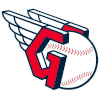 Shane Bieber, SP, Guardians - To my surprise, Merrifield was available and lasted all the way to pick 44. Since I was considering him in round 2, it was difficult to pass on him, but I know how important starting pitching is in this format. Bieber was knocked around a bit this spring, but can strike batters out with the best of them, which ultimately gave him the edge for me over Julio Urias.
Shane Bieber, SP, Guardians - To my surprise, Merrifield was available and lasted all the way to pick 44. Since I was considering him in round 2, it was difficult to pass on him, but I know how important starting pitching is in this format. Bieber was knocked around a bit this spring, but can strike batters out with the best of them, which ultimately gave him the edge for me over Julio Urias.
Other considerations: Urias, Edwin Diaz
4.53 -  J.T. Realmuto, C, Phillies - Prior to the draft, I loosely mapped things out with targets for each round and made a note to myself that round 4 would likely be my most difficult decision early on. There were simply too many players I liked being drafted in this pick range, including Marcus Semien, Pete Alonso, Dylan Cease, Will Smith, Realmuto and a few closers. Cease, Edwin Diaz and Ryan Pressly were gone by this pick and I thought there was a decent chance Semien would make it back to me in round 5. Therefore, I opted for Realmuto, whose overall production, stolen base contributions and projected plate appearances are massive difference makers at fantasy's weakest position.
J.T. Realmuto, C, Phillies - Prior to the draft, I loosely mapped things out with targets for each round and made a note to myself that round 4 would likely be my most difficult decision early on. There were simply too many players I liked being drafted in this pick range, including Marcus Semien, Pete Alonso, Dylan Cease, Will Smith, Realmuto and a few closers. Cease, Edwin Diaz and Ryan Pressly were gone by this pick and I thought there was a decent chance Semien would make it back to me in round 5. Therefore, I opted for Realmuto, whose overall production, stolen base contributions and projected plate appearances are massive difference makers at fantasy's weakest position.
Other considerations: Semien, Smith, Kenley Jansen
5.68 -  Jordan Romano, CL, Blue Jays - I considered double-tapping catchers since Smith was still available, but didn't think a closer that I liked would make it back to me in round 6. I've had Romano as a top 5 closer since my initial 2022 Closer Rankings went live in February, so this is a 'put your money where your mouth is' selection.
Jordan Romano, CL, Blue Jays - I considered double-tapping catchers since Smith was still available, but didn't think a closer that I liked would make it back to me in round 6. I've had Romano as a top 5 closer since my initial 2022 Closer Rankings went live in February, so this is a 'put your money where your mouth is' selection.
Other considerations: Smith, Aroldis Chapman, Craig Kimbrel
6.83 -  Alek Manoah, SP, Blue Jays - I had a starting pitcher or a middle infielder like Brandon Lowe, Jorge Polanco or Javier Baez penciled in for this round. Unfortunately, most of my SP targets - Trevor Rogers, Charlie Morton, Yu Darvish - were long gone and my Twitter feed offered no updates on Lance Lynn's knee injury. Manoah was my last starter standing from this round to make this an easy pick.
Alek Manoah, SP, Blue Jays - I had a starting pitcher or a middle infielder like Brandon Lowe, Jorge Polanco or Javier Baez penciled in for this round. Unfortunately, most of my SP targets - Trevor Rogers, Charlie Morton, Yu Darvish - were long gone and my Twitter feed offered no updates on Lance Lynn's knee injury. Manoah was my last starter standing from this round to make this an easy pick.
7.98 -  Nathan Eovaldi, SP, Red Sox - I had three starters and a handful of hitters written down for this pick. None of the hitters were available, but I had my choice of all three arms and went with the most established one who doesn't walk many batters. I may end up regretting this if Garcia or McClanahan break out in 2022.
Nathan Eovaldi, SP, Red Sox - I had three starters and a handful of hitters written down for this pick. None of the hitters were available, but I had my choice of all three arms and went with the most established one who doesn't walk many batters. I may end up regretting this if Garcia or McClanahan break out in 2022.
Other considerations: Luis Garcia, Shane McClanahan
8.113 - 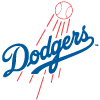 Justin Turner, 3B, Dodgers - I was praying one of the above starters would make it back to me, but I should have known better in such a sharp room. I actually cursed Chris Liss aloud when he took Clayton Kershaw and Garcia in rounds 7 and 8 respectively. I'm sure he will feel great joy in reading that! Instead, I pivoted back to hitting and landed a quality player at one of the weaker fantasy positions.
Justin Turner, 3B, Dodgers - I was praying one of the above starters would make it back to me, but I should have known better in such a sharp room. I actually cursed Chris Liss aloud when he took Clayton Kershaw and Garcia in rounds 7 and 8 respectively. I'm sure he will feel great joy in reading that! Instead, I pivoted back to hitting and landed a quality player at one of the weaker fantasy positions.
9.128 - 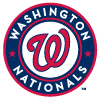 Josh Bell, 1B, Nationals - To this point in the draft, I felt my team was strong in batting average and I should shift my focus to power and RBI production. However, this was also the round I had exciting rookies Julio Rodriguez and Seiya Suzuki penciled in for. I was faced with your classic decision of safety and security vs. upside and risk. I do regret passing on the Rodriguez here, especially now that he was named to Seattle's opening day roster, but Bell should provide plenty of value in the categories I was targeting, hitting behind Juan Soto and Nelson Cruz in Washington's lineup.
Josh Bell, 1B, Nationals - To this point in the draft, I felt my team was strong in batting average and I should shift my focus to power and RBI production. However, this was also the round I had exciting rookies Julio Rodriguez and Seiya Suzuki penciled in for. I was faced with your classic decision of safety and security vs. upside and risk. I do regret passing on the Rodriguez here, especially now that he was named to Seattle's opening day roster, but Bell should provide plenty of value in the categories I was targeting, hitting behind Juan Soto and Nelson Cruz in Washington's lineup.
Other considerations: J-Rod, Suzuki, C.J. Cron
10.143 - 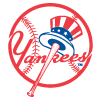 Jordan Montgomery, SP, Yankees - There's been a lot of hype surrounding Montgomery's stuff metrics and I'll be the first admit I've bought in, jumping him about 30 spots ahead of his ADP. He has a solid role and team context, albeit he pitches in a tough division.
Jordan Montgomery, SP, Yankees - There's been a lot of hype surrounding Montgomery's stuff metrics and I'll be the first admit I've bought in, jumping him about 30 spots ahead of his ADP. He has a solid role and team context, albeit he pitches in a tough division.
Other considerations: Tarik Skubal, Luis Castillo
11.158 - 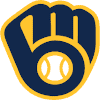 Kolten Wong, 2B, Brewers - I strongly considered an outfielder, but I'd been tracking the second base position and there were only a few left that I really liked. Wong always feels underrated to me and he adds some much-needed speed for my team.
Kolten Wong, 2B, Brewers - I strongly considered an outfielder, but I'd been tracking the second base position and there were only a few left that I really liked. Wong always feels underrated to me and he adds some much-needed speed for my team.
Other considerations: Dylan Carlson, Eddie Rosario
12.173 -  Dylan Carlson, OF, Cardinals - This was the range of the draft where I anticipated I'd need to fill out my remaining outfield spots, as we're required to start five in the NFBC. Carlson has been hitting at the top of the Cardinals' lineup this spring, which is very appealing for obvious reasons. With 73rd percentile sprint speed, the hope is he will run a bit more on the base paths than he did in 2021 (only two steals). Carlson seems like a better fit as St. Louis' leadoff man than Tommy Edman, who sports a career .321 OBP.
Dylan Carlson, OF, Cardinals - This was the range of the draft where I anticipated I'd need to fill out my remaining outfield spots, as we're required to start five in the NFBC. Carlson has been hitting at the top of the Cardinals' lineup this spring, which is very appealing for obvious reasons. With 73rd percentile sprint speed, the hope is he will run a bit more on the base paths than he did in 2021 (only two steals). Carlson seems like a better fit as St. Louis' leadoff man than Tommy Edman, who sports a career .321 OBP.
Other considerations: Tommy Pham, Andrew Benintendi
13.188 -  Tommy Pham, OF, Reds - This one was tough for me, as I've regretted not taking Benintendi since the draft ended. I may have been swayed by Pham's career numbers at Great American Ballpark - 33 games, .366 batting average, .954 OPS.
Tommy Pham, OF, Reds - This one was tough for me, as I've regretted not taking Benintendi since the draft ended. I may have been swayed by Pham's career numbers at Great American Ballpark - 33 games, .366 batting average, .954 OPS.
Other considerations: Benintendi, Robbie Grossman
14.203 - 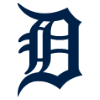 Robbie Grossman, OF, Tigers - I'm not expecting another 20/20 season from Grossman, but the Tigers lineup is significantly better than it was last year and 15/15 is still within reach, which is what I was seeking from this pick.
Robbie Grossman, OF, Tigers - I'm not expecting another 20/20 season from Grossman, but the Tigers lineup is significantly better than it was last year and 15/15 is still within reach, which is what I was seeking from this pick.
Other considerations: AJ Pollock, Harrison Bader, Randal Grichuk
15.218 - 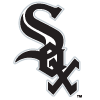 AJ Pollock, OF, White Sox - Pollock or Bader was a tough call for me, as I've been on Bader all draft season, expecting a breakout. Pollock typically hits for a much better average and still chips in on the base paths, although moving from the Dodgers to the White Sox may limit his stolen base upside in 2022. If Grichuk even chipped in five steals recently, I'd have taken him given his new confines in Colorado.
AJ Pollock, OF, White Sox - Pollock or Bader was a tough call for me, as I've been on Bader all draft season, expecting a breakout. Pollock typically hits for a much better average and still chips in on the base paths, although moving from the Dodgers to the White Sox may limit his stolen base upside in 2022. If Grichuk even chipped in five steals recently, I'd have taken him given his new confines in Colorado.
Other considerations: Bader, Grichuk
16.233 - 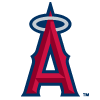 Reid Detmers, SP, Angels - While I felt strongly about my team through the first 15 rounds, the latter-half of the draft is where I felt I could have been more prepared. Detmers was a last-second pick and knee-jerk reaction to Matt Brash coming off the board in Round 15. I'm encouraged by his highlights this spring, but Detmers may have been a reach at this spot.
Reid Detmers, SP, Angels - While I felt strongly about my team through the first 15 rounds, the latter-half of the draft is where I felt I could have been more prepared. Detmers was a last-second pick and knee-jerk reaction to Matt Brash coming off the board in Round 15. I'm encouraged by his highlights this spring, but Detmers may have been a reach at this spot.
17.248 - 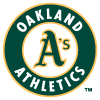 Lou Trivino, CL, Athletics - I had three closer targets penciled in between rounds 14 through 17 and I missed out on Robert Suarez (round 14) and Anthony Bender (by a few picks). I feel fortunate to have landed Trivino here and would have drafted another starter if he wasn't.
Lou Trivino, CL, Athletics - I had three closer targets penciled in between rounds 14 through 17 and I missed out on Robert Suarez (round 14) and Anthony Bender (by a few picks). I feel fortunate to have landed Trivino here and would have drafted another starter if he wasn't.
18.263 -  Nick Pivetta, SP, Red Sox - I don't love Pivetta given his deficiencies in WHIP (1.30 last season), walk rate (3.8 BB/9) and homer-prone tendencies (1.4 HR/9), but strikeout upside is what I was looking for from my eighth pitcher.
Nick Pivetta, SP, Red Sox - I don't love Pivetta given his deficiencies in WHIP (1.30 last season), walk rate (3.8 BB/9) and homer-prone tendencies (1.4 HR/9), but strikeout upside is what I was looking for from my eighth pitcher.
Other considerations: Nestor Cortes, Shane Baz, Eric Lauer, Marco Gonzales
19.278 -  Shane Baz, SP, Rays - Baz fell about 50 picks past his ADP from the April 1-2 Main Event drafts and I wanted to stash some upside. In hindsight, I like the value that Vlad Sedler got on Jack Flaherty to kick off round 21 a bit more.
Shane Baz, SP, Rays - Baz fell about 50 picks past his ADP from the April 1-2 Main Event drafts and I wanted to stash some upside. In hindsight, I like the value that Vlad Sedler got on Jack Flaherty to kick off round 21 a bit more.
20.293 -  Miguel Rojas, SS, Marlins - I purposely waited to draft my starting shortstop because of the late value potential of Brandon Crawford, Jeremy Pena, Gavin Lux, Bryson Stott and Paul DeJong. Rojas fits what I was looking for with a solid average and a bit of speed, but I am mildly concerned that I waited too long to address the position.
Miguel Rojas, SS, Marlins - I purposely waited to draft my starting shortstop because of the late value potential of Brandon Crawford, Jeremy Pena, Gavin Lux, Bryson Stott and Paul DeJong. Rojas fits what I was looking for with a solid average and a bit of speed, but I am mildly concerned that I waited too long to address the position.
21.308 -  Eric Lauer, SP, Brewers - My draft roadmap for this round was marked 'boring SP' and that's pretty much what I got with Lauer, who I started looking at a few rounds ago. I love his team and division, but I'm concerned the Brewers will piggyback him with Aaron Ashby on occasion to limit his innings, which will make him difficult to time.
Eric Lauer, SP, Brewers - My draft roadmap for this round was marked 'boring SP' and that's pretty much what I got with Lauer, who I started looking at a few rounds ago. I love his team and division, but I'm concerned the Brewers will piggyback him with Aaron Ashby on occasion to limit his innings, which will make him difficult to time.
22.323 -  Danny Jansen, C, Blue Jays - Jansen is the catcher I have the most player shares of in 2022 drafts. His second-half output last season is extremely appealing and I was happy to pair him with JTR with the other second catcher types starting to come off the board.
Danny Jansen, C, Blue Jays - Jansen is the catcher I have the most player shares of in 2022 drafts. His second-half output last season is extremely appealing and I was happy to pair him with JTR with the other second catcher types starting to come off the board.
23.338 -  Tony Kemp, 2B, Athletics - Kemp is projected to lead off for Oakland, which carries some value even though colleague and known A's fan Scott Jenstad isn't too excited about him. Scott respectfully advised that Kemp has only hit eight career barrels, which certainly limits any potential power improvement. However, Kemp has more walks than strikeouts in each of the past two seasons and has double-digit stolen base upside if given full-time at-bats.
Tony Kemp, 2B, Athletics - Kemp is projected to lead off for Oakland, which carries some value even though colleague and known A's fan Scott Jenstad isn't too excited about him. Scott respectfully advised that Kemp has only hit eight career barrels, which certainly limits any potential power improvement. However, Kemp has more walks than strikeouts in each of the past two seasons and has double-digit stolen base upside if given full-time at-bats.
24.353 -  Miles Mikolas, SP, Cardinals - At this point of the draft, I was refreshing RotoWire's Projected Starters grid to see which pitchers from my team wouldn't be playing during NFBC's first scoring period. With Manoah, Detmers and Lauer not projected to pitch until the second scoring period, I'd need some pitchers to replace them for the Thursday through Sunday scoring period beginning April 7. Mikolas was an easy target given his opening week matchup against the Pirates. Kyle Gibson was another target due to his opening week matchup with Oakland, but he went the pick right before mine.
Miles Mikolas, SP, Cardinals - At this point of the draft, I was refreshing RotoWire's Projected Starters grid to see which pitchers from my team wouldn't be playing during NFBC's first scoring period. With Manoah, Detmers and Lauer not projected to pitch until the second scoring period, I'd need some pitchers to replace them for the Thursday through Sunday scoring period beginning April 7. Mikolas was an easy target given his opening week matchup against the Pirates. Kyle Gibson was another target due to his opening week matchup with Oakland, but he went the pick right before mine.
25.368 -  Reiver Sanmartin, SP, Reds - Similar to my experience in round 16, this was another situation where I was left scrambling with no idea who to draft. Sanmartin was someone I added to my queue the round prior, knowing he'd be starting for Cincinnati during the first scoring period. To my dismay, CJ Abrams and Jordan Hicks were two targets of mine that went right before this pick. Once again left to scramble in a last-second decision, I reluctantly clicked Sanmartin's name. On the plus side, I've been touting Sanmartin since he made his big league debut towards the end of last year. It will be interesting to see if he pitches well enough to maintain his rotation spot once Luis Castillo and Mike Minor are healthy enough to return.
Reiver Sanmartin, SP, Reds - Similar to my experience in round 16, this was another situation where I was left scrambling with no idea who to draft. Sanmartin was someone I added to my queue the round prior, knowing he'd be starting for Cincinnati during the first scoring period. To my dismay, CJ Abrams and Jordan Hicks were two targets of mine that went right before this pick. Once again left to scramble in a last-second decision, I reluctantly clicked Sanmartin's name. On the plus side, I've been touting Sanmartin since he made his big league debut towards the end of last year. It will be interesting to see if he pitches well enough to maintain his rotation spot once Luis Castillo and Mike Minor are healthy enough to return.
26.383 - 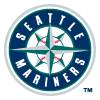 J.P. Crawford, SS, Mariners - Without a backup to Rojas at shortstop, Crawford was the best one left.
J.P. Crawford, SS, Mariners - Without a backup to Rojas at shortstop, Crawford was the best one left.
27.398 -  Andy Ibanez, 2B, Rangers - I also needed some insurance at third base to cover my injury-prone starter (Turner). Ibanez doesn't have third base eligibility yet, but I'm hopeful he will gain it early in the third scoring period.
Andy Ibanez, 2B, Rangers - I also needed some insurance at third base to cover my injury-prone starter (Turner). Ibanez doesn't have third base eligibility yet, but I'm hopeful he will gain it early in the third scoring period.
28.413 -  Brad Miller, 1B/OF, Rangers - Miller is versatile defensively and is someone I can plug in on occasion when Texas opposes several right-handers.
Brad Miller, 1B/OF, Rangers - Miller is versatile defensively and is someone I can plug in on occasion when Texas opposes several right-handers.
29.428 -  Jonathan Loaisiga, RP, Yankees - More pitching insurance for the first scoring period, along with the possibility for ancillary saves if I keep him on my roster.
Jonathan Loaisiga, RP, Yankees - More pitching insurance for the first scoring period, along with the possibility for ancillary saves if I keep him on my roster.
30.443 -  Michael Fulmer, RP, Tigers - See above. Fulmer will likely become one of my first cuts when I make a FAAB addition.
Michael Fulmer, RP, Tigers - See above. Fulmer will likely become one of my first cuts when I make a FAAB addition.
Here's the final product:
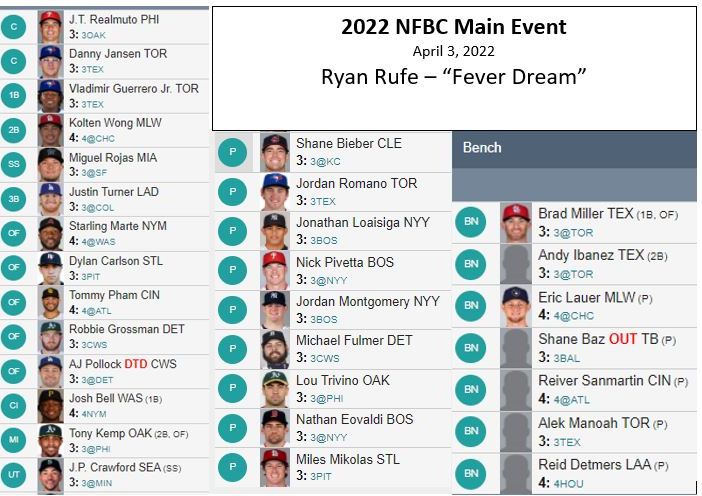
My initial reaction to the draft was that I was exhausted and had completely botched the whole thing. My one and possibly only chance to make some noise in this format. I did eventually calm down and reminded myself there's a long season ahead, and that everyone makes mistakes during the draft.
I'd love to hear from you in the comments. Let me know what pick(s) you agreed with or didn't like. Let me know if there was anything I completely overlooked throughout this process, or should consider doing in future drafts.
I'm looking forward to a crazy ride with you all!
For more perspective on the NFBC Main Event, Jeff Erickson recently broke down both of his drafts here.


